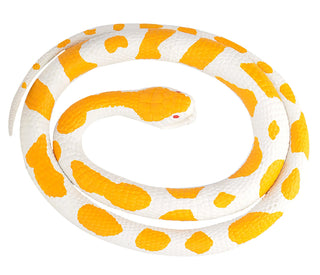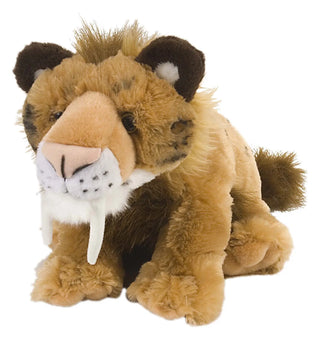Your Search For "golden lion tamarin" Revealed The Following:
Filter
Active Filters
Pocketkins Eco Lion - 5"
$8.99
- Unit price
- / per
INCLUDES:
- Age:0+
- Brand:Pocketkins Eco
- Easter
- Features:Eco
- Gender:Boy
- Gender:Girl
- Size:5"
$8.99
- Unit price
- / per
Lion Stuffed Animal - 7"
$9.99
- Unit price
- / per
INCLUDES:
- Age:0+
- AnimalType:Lion
- Brand:Hug'ems
- Easter
- Gender:Boy
- Gender:Girl
- Lion
- Size:7"
$9.99
- Unit price
- / per
Lion Stuffed Animal - 12"
$19.99
- Unit price
- / per
INCLUDES:
- Age:0+
- Brand:Ecokins
- Gender:Boy
- Gender:Girl
- Size:12"
$19.99
- Unit price
- / per
Wild Calls Lion - 8"
$14.99
- Unit price
- / per
INCLUDES:
- Age:0+
- AnimalType:Lion
- Brand:Wild Calls
- Features:With Sound
- Gender:Boy
- Gender:Girl
- Lion
- Size:8"
$14.99
- Unit price
- / per
Lion Stuffed Animal - 8"
Regular price
$10.40
$12.99
Save 20%
- Unit price
- / per
INCLUDES:
- Age:0+
- Brand:Ecokins
- Gender:Boy
- Gender:Girl
- Size:8"
Regular price
$10.40
$12.99
Save 20%
- Unit price
- / per
Mountain Lion Stuffed Animal - 12"
$22.99
- Unit price
- / per
INCLUDES:
- Age:0+
- AnimalType:Mountain Lion
- Brand:Cuddlekins
- Gender:Boy
- Gender:Girl
- Mountain Lion
- Size:12"
$22.99
- Unit price
- / per
Lion Stuffed Animal - 8"
$12.99
- Unit price
- / per
INCLUDES:
- Age:0+
- AnimalType:Lion
- Brand:Cuddlekins
- Gender:Boy
- Gender:Girl
- Lion
- Size:8"
$12.99
- Unit price
- / per
Wild Racers Lion Action Toy - 4.5"
$8.99
- Unit price
- / per
INCLUDES:
- Age:18M+
- Brand:Wild Racers
- Gender:Boy
- Gender:Girl
- Size:4.5"
$8.99
- Unit price
- / per
Green Guardian Lion
Regular price
$4.80
$5.99
Save 20%
- Unit price
- / per
INCLUDES:
- Age:3+
- Brand:Green Guardians
- Gender:Boy
- Gender:Girl
- Size:4"
Regular price
$4.80
$5.99
Save 20%
- Unit price
- / per
Tailkins Lion Stuffed Animal - 40"
$23.99
- Unit price
- / per
INCLUDES:
- Age:0+
- Brand:Tailkins
- Gender:Boy
- Gender:Girl
- Size:40"
$23.99
- Unit price
- / per
Mountain Lion Stuffed Animal - 8"
Regular price
$10.40
$12.99
Save 20%
- Unit price
- / per
INCLUDES:
- Age:0+
- Brand:Ecokins
- Gender:Boy
- Gender:Girl
- Size:8"
Regular price
$10.40
$12.99
Save 20%
- Unit price
- / per
Albino Python Rubber Snake - 46"
$12.99
- Unit price
- / per
INCLUDES:
- Age:3+
- AnimalType:Python
- Brand:Wild Republic Rubber Snakes
- Gender:Boy
- Gender:Girl
- Python
- Size:46"
$12.99
- Unit price
- / per
Golden Lion Tamarin Stuffed Animal - 12"
$22.99
- Unit price
- / per
INCLUDES:
- Age:0+
- AnimalType:Golden Lion Tamarin
- Brand:Cuddlekins
- Gender:Boy
- Gender:Girl
- Golden Lion Tamarin
- Size:12"
$22.99
- Unit price
- / per
Cuddlekins Mini Golden Lion Tamarin Stuffed Animal - 8"
$12.99
- Unit price
- / per
INCLUDES:
- Age:0+
- Brand:Cuddlekins Mini
- Gender:Boy
- Gender:Girl
- Size:8"
$12.99
- Unit price
- / per
Lion Stuffed Animal - 5"
$7.99
- Unit price
- / per
INCLUDES:
- Age:0+
- Brand:Pocketkins
- Easter
- Gender:Boy
- Gender:Girl
- Size:5"
$7.99
- Unit price
- / per
Smilodon Stuffed Animal - 12"
$22.99
- Unit price
- / per
INCLUDES:
- Age:0+
- AnimalType:Smilodon
- Brand:Cuddlekins
- Gender:Boy
- Gender:Girl
- Size:12"
- Smilodon
$22.99
- Unit price
- / per
Color Changing Rubber Snakes Pink Snake - 27"
$10.99
- Unit price
- / per
INCLUDES:
- Age:3+
- Brand:Wild Republic Color Changing Rubber Snakes
- Features:Color Changing Snakes
- Gender:Boy
- Gender:Girl
- Size:27"
$10.99
- Unit price
- / per
You're viewing 1-17 of 17 results
















